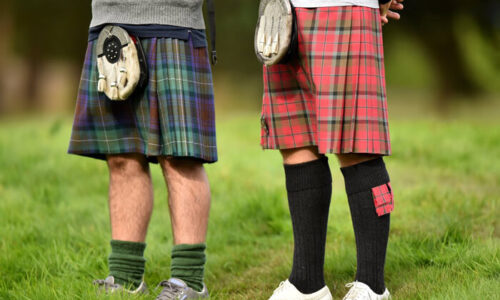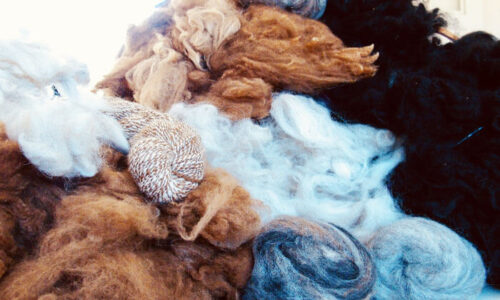Have you ever peered in awe at the regal splendor of a traditional Scottish kilt, only to find your curiosity piqued by the intriguing pouch hanging from its front? The enigmatic bag on a kilt has long been shrouded in mystery, leaving many fascinated souls wondering, “What’s the Bag on a Kilt Called?” In our quest to unveil this sartorial riddle, we embark on a journey through Scottish heritage and highland fashion, where each stitch tells a story and every accessory carries profound cultural significance.
The kilt itself stands as an iconic symbol of Scotland’s rich history and enduring pride. Woven into the very fabric of Scottish culture, kilts have transcended mere clothing to become emblems of national identity and reverence for tradition. From the misty moors of olden landscapes to modern-day ceremonial gatherings, kilts drape their wearers in echoes of valor and honor. As we delve deeper into the folds of tartan lore, we uncover not just a garment but a piece of living history that links past generations with those yet to come. Join us as we unravel the threads that bind the essence of Scotland together—a saga intertwined with tales both ancient and resplendent.
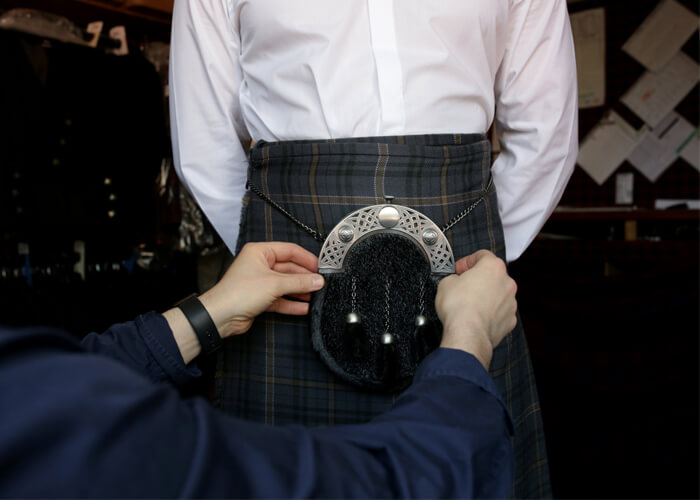
The Origins of the Kilt: A Journey Through Scottish Culture and Tradition
Picture this: a misty Scottish morning, where the sound of bagpipes fills the air, and men adorned in colorful tartans proudly showcase their heritage. The history of kilts in Scotland is as vibrant as the patterns that adorn them. Dating back centuries, kilts were originally more than just garments; they were symbols of clan allegiance and a reflection of one’s roots. What began as a practical piece of clothing for rugged Highland terrain evolved into a cultural emblem that embodies Scottish identity and pride.
As early as the 16th century, kilts started to become synonymous with Scottish culture, particularly in the Highlands. The transition from simple cloth to intricately patterned tartan marked a shift towards using clothing as a form of storytelling. Each clan developed its unique tartan design, allowing wearers to not only display their family lineage but also symbolize unity within their group. This evolution solidified the kilt’s place in history as more than just attire; it became a testament to resilience, tradition, and community.
Beyond kilts, traditional Scottish attire encompasses much more than meets the eye. From sporrans dangling at the front to daggers tucked into socks known as sgian-dubhs, each element carries its symbolism and purpose. These pieces come together like threads weaving through time, connecting past generations with those yet to come. Understanding the origins and significance of these garments unveils not just fashion choices but deep-rooted cultural narratives that have withstood the test of time – reminding us that traditions are portals to our shared history and collective spirit.
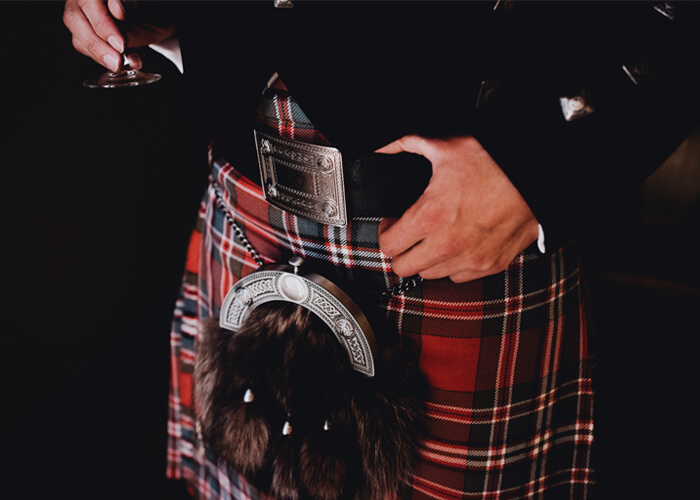
Defining the Sporran
Picture a rugged Scottish landscape, bagpipes playing in the distance, and a proud warrior donning his kilt. What catches your eye? The sporran. This unique accessory is more than just an embellishment; it serves a vital function. The sporran, from the Gaelic word “sporan,” meaning purse or pouch, is a small bag worn around the waist that completes the traditional Highland dress. It not only adds flair to the attire but also provides practical storage – a historical fanny pack of sorts, keeping essentials close at hand.
Throughout history, sporrans have been crafted from various materials, reflecting both functionality and fashion. Early designs featured simple leather pouches for storing items like food or ammo during battles. As time progressed, sporrans evolved into intricate pieces adorned with fur, metalwork, or even precious stones for ceremonial occasions. Each style of sporran tells a story of its era—sealing the essence of Scottish heritage in its design.
Beyond its utilitarian roots, the sporran carries deep cultural significance in Scottish dress. It symbolizes bravery, as warriors would hang trophies or clan emblems from their sporrans after battle as symbols of valor and identity. Today, wearing a sporran signifies respect for tradition and acknowledges Scotland’s rich history. The incorporation of family crests or symbolic motifs on modern sporrans maintains this connection to one’s lineage and heritage—an emblematic tie to Scotland’s past within contemporary fashion.
Exploring the Different Types of Sporrans
When delving into the world of sporrans, one quickly discovers that these iconic Scottish accessories come in various forms to suit different occasions and styles. Day sporrans, often considered more casual and practical, are typically smaller in size and simpler in design compared to their formal counterparts. They are ideal for everyday wear or events where a less ornate look is preferred. Dress sporrans, on the other hand, exude elegance and sophistication. These sporrans are larger and adorned with intricate details like fur or metalwork, making them perfect for formal gatherings such as weddings or ceilidhs. Semi-formal sporrans bridge the gap between day wear and formal events, offering a blend of functionality and style suitable for a range of occasions.
To better understand the distinction between these sporrans, let’s take a journey back in time to explore notable figures who donned specific types of sporrans. In history, renowned Scottish warriors like William Wallace or Rob Roy McGregor were often depicted wearing elaborate dress sporrans befitting their status and authority. In contrast, Highland shepherds might have opted for more utilitarian day sporrans while tending to their flocks in rugged terrain. Even at significant events like clan gatherings or battles, the choice of sporran could indicate one’s social standing or role within the community.
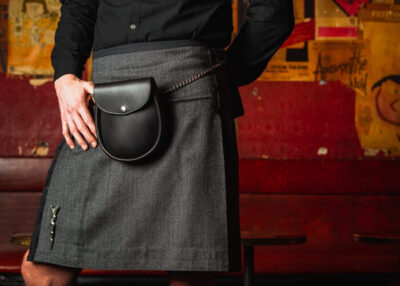
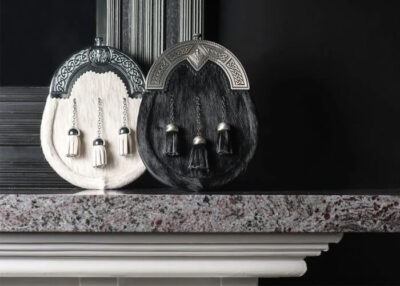




As fashion trends evolved over the centuries, so did the designs and materials used in crafting sporrans. The variations seen in different types of sporrans showcase not only personal style but also cultural heritage and traditions passed down through generations. By understanding the nuances between day, dress, and semi-formal sporrans, individuals can truly appreciate how each piece contributes to the rich tapestry of Scottish attire and identity. Whether chosen for practicality or prestige, the sporran remains a distinctive symbol deeply ingrained in Scottish culture.
Innovations in Modern Sporran Designs
The traditional sporran, once a functional pouch worn on kilts to carry essentials, has undergone a remarkable transformation in modern times. As the fashion world continues to evolve, so do the designs and materials used in crafting sporrans. Contemporary designers have taken the classic sporran and infused it with new life by incorporating elements like sleek leather or edgy metal accents. These modern interpretations embrace both tradition and innovation, appealing to a wider audience beyond traditional Scottish attire enthusiasts.
One notable influence on Highland wear is the impact of the global fashion industry. Designers worldwide have drawn inspiration from Scottish heritage, reimagining sporrans to fit modern aesthetics while staying true to their roots. This fusion of traditional Scottish craftsmanship with contemporary design trends has resulted in sporrans becoming sought-after accessories for various occasions, from formal events to fashion runways. The versatility and adaptability of modern sporran designs showcase the enduring appeal of Scottish culture on a global scale.
Innovators in sporran design are continuously pushing boundaries by experimenting with unconventional materials and bold patterns. From laser-cut metal detailing to hand-stitched leather embellishments, each unique creation tells a story of creativity and heritage. These innovative designs not only pay homage to Scotland’s rich history but also serve as statements of individuality and style. By infusing modern elements into traditional attire like the sporran, designers are keeping Scottish culture alive while inspiring a new generation to appreciate its timeless charm.
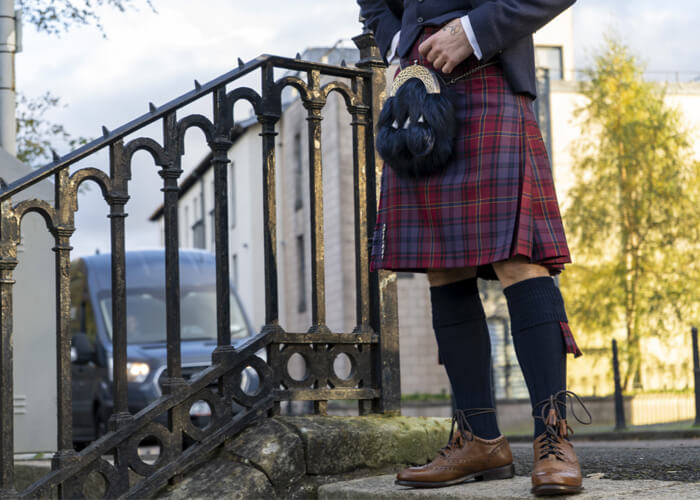
Maintenance and Care for Your Sporran
When it comes to preserving the quality and longevity of your sporran, a little care can go a long way. To ensure that your sporran remains an enduring piece of your Scottish attire, consider these essential tips. Start by gently brushing off any dust or debris with a soft-bristled brush before storing your sporran in a cool, dry place to prevent any damage from humidity. Remember, sporran maintenance is not just about cleaning but also about proper storage to protect its integrity.
Avoid the common mistake of using harsh chemicals or cleaners on your sporran, as this could damage the leather or fabric material over time. Instead, opt for specialized leather cleaners for leather sporrans and gentle soap solutions for fabric ones. Additionally, never expose your sporran to direct sunlight for extended periods as this can cause fading and deterioration of the material. Simple steps like these can make a significant difference in extending the lifespan of your cherished sporran.
While traditional cleaning methods are vital for maintaining the authenticity of your sporran, embracing modern techniques can also offer benefits. For instance, advancements in eco-friendly cleaning products have made it easier to care for delicate fabrics without compromising their quality. By blending tradition with innovation in caring for your sporran, you honor its heritage while adapting to modern conveniences that support sustainability and preservation. So, whether you have an antique heirloom or a contemporary design, showing respect through proper maintenance ensures that your sporran remains a timeless accessory.
Incorporating these maintenance practices not only safeguards the beauty and integrity of your sporran but also deepens your connection to Scottish culture and tradition. By caring for this iconic accessory with reverence and attention to detail, you carry forward a legacy steeped in pride and history while ensuring that future generations can appreciate its significance as much as you do today.
Embracing Tradition with Style
In the rich tapestry of Scottish culture, the bag on a kilt stands not just as an accessory but as a symbol of heritage and identity. Its history intertwined with the evolution of kilts, the sporran has evolved into a timeless piece that embodies the spirit of Scotland. As we unravel the mystery behind its name and purpose, we uncover a deeper connection to the traditions and values held dear by generations past.
Let us not merely view the sporran as an adornment but as a vessel carrying the legacy of a proud nation. By understanding its significance and embracing its presence in Highland attire, we honor the resilience and spirit of Scotland. As enthusiasts of history, and fashion, or simply admirers of Scottish culture, let us carry forward this tradition with grace and respect—incorporating elements that not only enhance our style but also weave us into the cultural fabric of Scotland’s enduring story. So, next time you see a kilt with its distinctive sporran swaying gently, remember it is more than just a bag—it is a testament to tradition embraced with style.
-
Product on sale
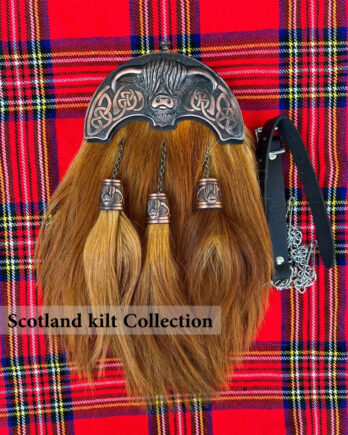 Men’s Goat Hair SporranOriginal price was: $423.$379Current price is: $379.
Men’s Goat Hair SporranOriginal price was: $423.$379Current price is: $379. -
Product on sale
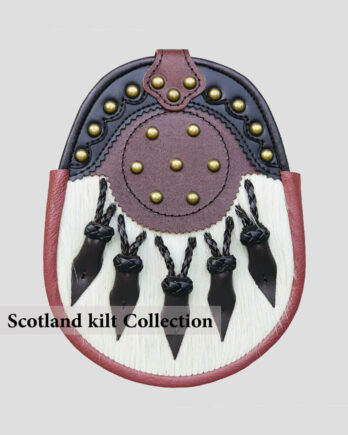 Antique Brown Leather SporranOriginal price was: $140.$89Current price is: $89.
Antique Brown Leather SporranOriginal price was: $140.$89Current price is: $89. -
Product on sale
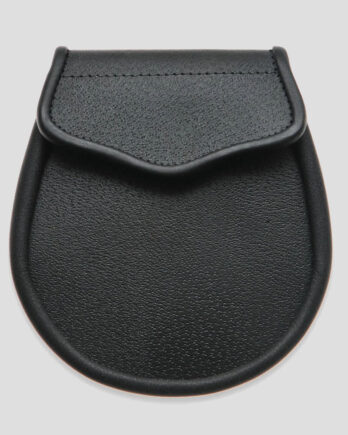 Handmade Simple Black Leather Day SporranOriginal price was: $156.$69Current price is: $69.
Handmade Simple Black Leather Day SporranOriginal price was: $156.$69Current price is: $69. -
Product on sale
 Cantle Leaf Black Leather Hunting SporranOriginal price was: $297.$109Current price is: $109.
Cantle Leaf Black Leather Hunting SporranOriginal price was: $297.$109Current price is: $109. -
Product on sale
 Horse Hair Sporran with Silver Celtic CantleOriginal price was: $200.$178Current price is: $178.
Horse Hair Sporran with Silver Celtic CantleOriginal price was: $200.$178Current price is: $178. -
Product on sale
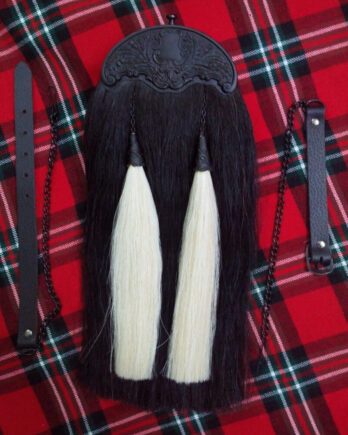 White Tassels Black Horse Hair SporranOriginal price was: $200.$178Current price is: $178.
White Tassels Black Horse Hair SporranOriginal price was: $200.$178Current price is: $178. -
Product on sale
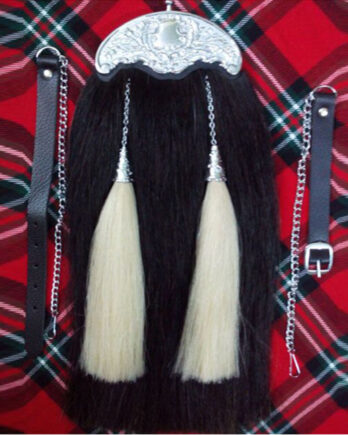 Black Horse Hair SporranOriginal price was: $200.$178Current price is: $178.
Black Horse Hair SporranOriginal price was: $200.$178Current price is: $178. -
Product on sale
 Horse Hair Celtic Cantle SporranOriginal price was: $200.$178Current price is: $178.
Horse Hair Celtic Cantle SporranOriginal price was: $200.$178Current price is: $178. -
Product on sale
 Celtic Cantle Rabbit Fur SporranOriginal price was: $70.$60Current price is: $60.
Celtic Cantle Rabbit Fur SporranOriginal price was: $70.$60Current price is: $60. -
Product on sale
 White Rabbit Fur Sporran With Three TasselsOriginal price was: $55.$49Current price is: $49.
White Rabbit Fur Sporran With Three TasselsOriginal price was: $55.$49Current price is: $49. -
Product on sale
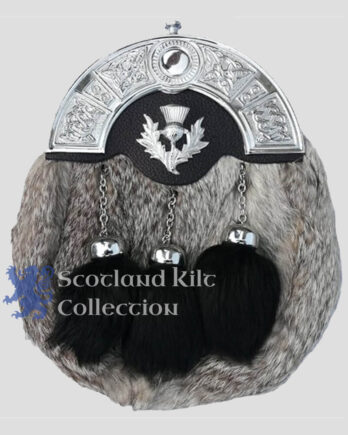 Thistle Grey Rabbit Fur SporranOriginal price was: $70.$60Current price is: $60.
Thistle Grey Rabbit Fur SporranOriginal price was: $70.$60Current price is: $60. -
Product on sale
 Grey Rabbit Fur Kilt SporranOriginal price was: $70.$60Current price is: $60.
Grey Rabbit Fur Kilt SporranOriginal price was: $70.$60Current price is: $60.
FAQs
What is the purpose of the sporran on a kilt?
Answer: The sporran serves as a pouch to hold small items and accessories.
Are there different types of sporrans for kilts?
Answer: Yes, there are several types of sporrans such as dress sporrans, day sporrans, and semi-dress sporrans.
How is the sporran typically worn?
Answer: The sporran is usually worn in front of the kilt, secured with a chain or leather strap.
Can anyone wear a sporran with a kilt?
Answer: Yes, anyone wearing a kilt can wear a sporran as part of their outfit.
Does the design or material of the sporran matter?
Answer: The design and material of the sporran can vary depending on personal preference and occasion.
Is it necessary to wear a sporran with every type of kilt outfit?
Answer: While not mandatory, wearing a sporran adds an authentic touch to most kilt outfits.
Are there any specific rules or etiquette regarding wearing a sporran with a kilt?
Answer: It’s generally considered proper etiquette to wear a sporran with your kilt for formal occasions or traditional events.


